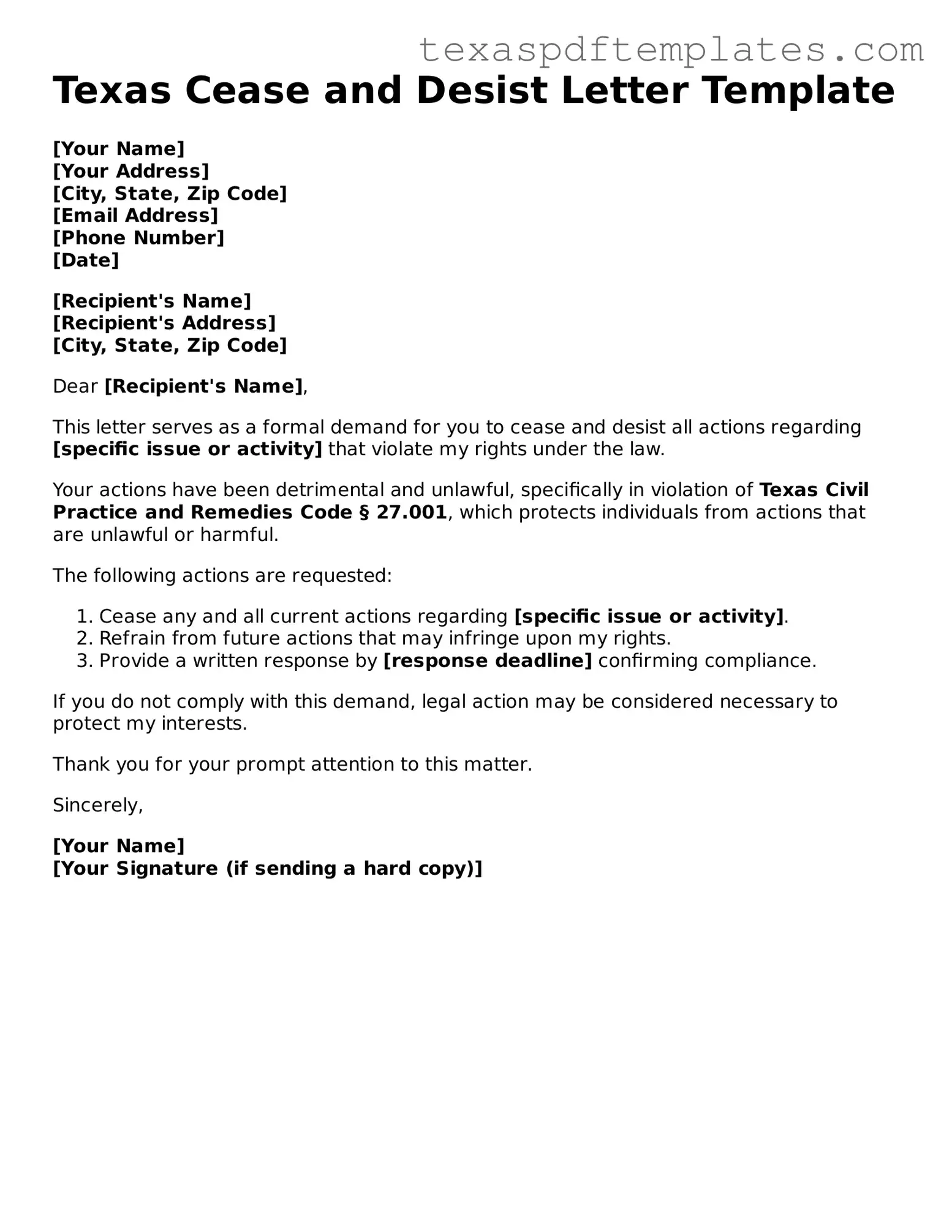Texas Cease and Desist Letter Template
[Your Name]
[Your Address]
[City, State, Zip Code]
[Email Address]
[Phone Number]
[Date]
[Recipient's Name]
[Recipient's Address]
[City, State, Zip Code]
Dear [Recipient's Name],
This letter serves as a formal demand for you to cease and desist all actions regarding [specific issue or activity] that violate my rights under the law.
Your actions have been detrimental and unlawful, specifically in violation of Texas Civil Practice and Remedies Code § 27.001, which protects individuals from actions that are unlawful or harmful.
The following actions are requested:
- Cease any and all current actions regarding [specific issue or activity].
- Refrain from future actions that may infringe upon my rights.
- Provide a written response by [response deadline] confirming compliance.
If you do not comply with this demand, legal action may be considered necessary to protect my interests.
Thank you for your prompt attention to this matter.
Sincerely,
[Your Name]
[Your Signature (if sending a hard copy)]
